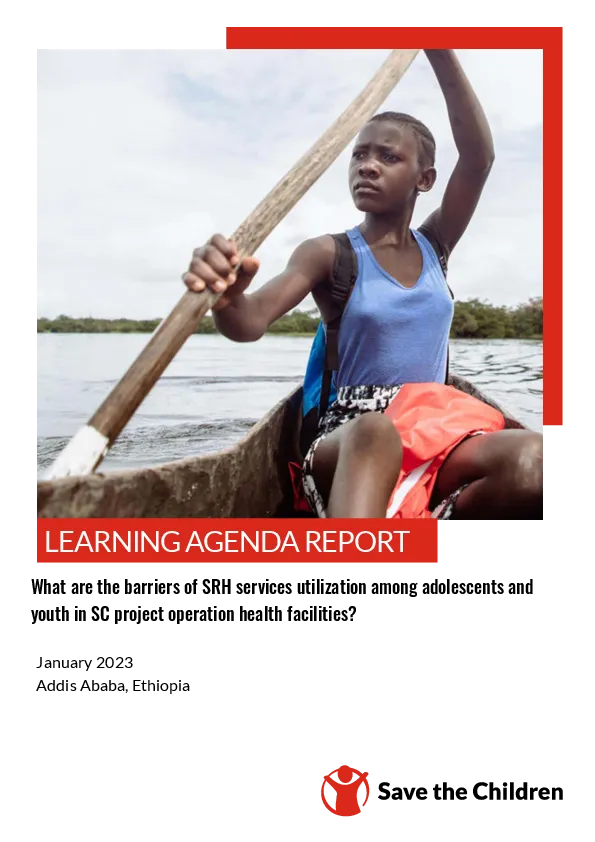
Study: Assessments
What are the barriers of SRH services utilization among adolescents and youth in SC project operation health facilities?
Publication year:
2023
English
Format:
PDF (1022.2 KiB)
Publisher:
Save the Children Ethiopia,Save the Children International
The main objective of the learning agenda was to understand the situation of SRH service-related issues (Knowledge, Attitude, Practice, Access and related barriers) among young women in selected areas in Sidama Region, Ethiopia. The study was undertaken in Hawassa, Yirgalem, and Boricha Woredas in Sidama National Regional State. A mixed-method study design involving both qualitative and quantitative methods was used where both components were performed concurrently. The study was conducted with the meaningful involvement of all project partners including beneficiaries and other relevant stakeholders.
Knowledge on SRH: the proportion of young women with adequate knowledge about SRH issues was found to be 56.3% (42.9% among non-project participants and 69.6% among project participants) with 95%CI (51.1-61.3).
Attitude: the overall favorable attitude level of the young women was 55.4% (45.1% among non-project participants and 65.8% among project participants with an overall level of 95% CI (50.3, 60.5).
Practice: the overall good practice level of the young women was 53.0% (49.5% among non-project participants and 56.5% among project participants) with an overall 95% CIA (47.9, 58.1).
Harmful Traditional Practices and SRH Rights: a large majority (68.5%) of the participants mentioned that polygamy was one of the most common HTPs in the community followed by early marriage (65.8%) and FGM (50.8%).
SRH Information & services utilisation: the majority (57.3%) of the young women reported the presence of institutions that provides SRH information in their area and governmental health service providers appeared to be the prime institutions that provide RH information as reported by 36.5% of the respondents.
Read full abstract
View & Download
English
1 Documents
Document information
Format
Content type
Country
Region
Rights
© Author/Publisher
Found a mistake? Help us improve!
If you have noticed a document assigned to the wrong author or any other inaccuracies, let us know! Your feedback helps us keep our data accurate and useful for everyone.
Share
Link
